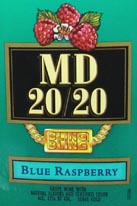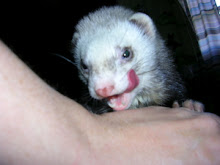The Wikipedia page gives a great explanation:
A low-end fortified wine, commonly known as bum wine, wino wine, twist-cap wine, decker wine or rotgut wine, is any of a class of inexpensive fortified wines that are popular among the poor, homeless, and college students in the United States for the quick inebriation they deliver[1]
Popular examples of Bum Wine
Some popular beverages in this category are Thunderbird, MD 20/20, Cisco, Night Train, and Wild Irish Rose. Buckfast Tonic Wine[1] and formerly Ripple have similar reputations, though Ripple is no longer produced[1]. In Canada, Bright's Pale Dry Select Sherry is considered a potent low-end fortified wine[1]. Another such wine that is out of production is Sly Fox[1]. These wines typically have an alcohol content of between 15 and 20% ABV. Other characteristics include added sugars, artificial colorings and flavorings.
In contrast to table wine, which may be enjoyed as an accompaniment to a meal, or high-end fortified wine, enjoyed as an aperitif or digestif, low-end fortified wines are generally considered suitable only for intoxication. Note that its classification as "wine" is a very loosely used term, and many people refer to it as "hooch", "street wine", "fortified wine", "bum wine", or "twist-cap wine".
Two popular brands in this category are produced by the E & J Gallo Winery, and were a large part of the company's sales in its early days. Currently, neither carries the logo or other indication of this source although "Boone's Farm" (produced by E&J) does (13.9% ABV). These are Night Train Express (usually abbreviated to Night Train, and even has a song named for it) and Thunderbird (The American Classic). Night Train typically contains 17.5% alcohol by volume. Thunderbird is sold at between 13% and 18% ABV and first became popular in the 1950s. Its popularity led to the introduction of Thunderbird ESQ. Night Train Express has been a very controversial brand among civic leaders in major cities as it is felt that Night Train, as well as other inexpensive high liquor content drinks, contribute to vagrancy and public drunkenness of homeless people. Thunderbird was once marketed in the United Kingdom as "The California Aperitif.". The 1950s radio jingle that promoted Thunderbird had a song that sang, "What's the word? / Thunderbird / How's it sold? / Good and cold / What's the jive? / Bird's alive / What's the price? / Thirty twice.". Ernest Gallo allegedly drove through a poor neighborhood and upon seeing a homeless individual drinking, he called out "What's the word?". The person enthusiastically responded, "Thunderbird!"
MD 20/20 a.k.a. Mad Dog is an American fortified "wine" produced by Mogen David wineries. MD 20/20 has an alcohol content that varies by flavor from 13% to 18% (with most of the 18% varieties discontinued, although Red Grape is widely available from the 18% category).
 "MD" stands for "Mogen David," the name of the company based in Westfield, New York which makes it; the company is named after the Star of David, which in the original Hebrew is Magen David (pronounced mah-GEN dah-VEED) or Yiddish (pronounced MUH-gen DUH-vid), literally meaning "Shield of David;" the product's aficionado dubbed it "Mad Dog" to represent the initials "MD". At colleges it is often traditional for fraternities to "Mad Dog" a prospective recruit by knocking on his door at daybreak and forcing him to drink the bottle quickly. It is known for its pleasant high and painful aftereffects, but also as an initiation rite.
"MD" stands for "Mogen David," the name of the company based in Westfield, New York which makes it; the company is named after the Star of David, which in the original Hebrew is Magen David (pronounced mah-GEN dah-VEED) or Yiddish (pronounced MUH-gen DUH-vid), literally meaning "Shield of David;" the product's aficionado dubbed it "Mad Dog" to represent the initials "MD". At colleges it is often traditional for fraternities to "Mad Dog" a prospective recruit by knocking on his door at daybreak and forcing him to drink the bottle quickly. It is known for its pleasant high and painful aftereffects, but also as an initiation rite.Cisco a.k.a "Liquid Crack" is the brand name of a highly alcoholic, low-price fortified wine, produced by the Centerra Wine Company (a division of Constellation Brands) with varieties selling at 17.5% and 19.5% alcohol by volume. Cisco has a distinctive syrup-sweet taste and, because of its color and bottle shape, was often mistaken for a wine cooler. The Federal Trade Commission forced the company to put a label on the bottle stating it was not a wine cooler and had the company change its marketing strategy from "Takes You By Surprise".[2].
Ripple was an inexpensive fortified wine produced by E & J Gallo Winery[3] that was popular among certain social classes in the United States, particularly in the 1970s. Due to its high alcohol content and low price, it had a reputation as a drink for alcoholics and the destitute. It was popular among young drinkers, both underage and college students. Ripple was mentioned often as being Fred Sanford's alcoholic beverage of choice on the 1970s TV show Sanford and Son (starring Redd Foxx), who once referred to it as "The national wine of Watts".[4] It is no longer produced.
Richards Wild Irish Rose is an alcoholic beverage produced by Centerra Wine Company, which is part of the Constellation Brands organization. It was introduced in 1954 and currently sells about two million cases annually. The brand is available in 13.9% and 18% alcohol by volume. The 13.9% wine has 115 calories (480 kJ) per 100 ml or 136 calories (570 kJ) per 4 ounces. The 18% product has about 138 calories (578 kJ) per 100 ml or 164 calories (687 kJ) per 4 ounces.
[edit]History
An early reference to the problem of cheap and poorly made wines is in the "Report on Cheap Wines" in the November 5, 1864 issue of The Medical Times and Gazette. The author, in prescribing inexpensive wines for a number of ills, cautions against the "fortified" wines of the day, describing of one sample that he had tried:
When the cork was drawn it was scarcely tinted, and was a very bad one - a thing of no good augury for the wine. There was no smell of port wine. The liquid, when tasted, gave the palate half-a-dozen sensations instead of one. There was a hot taste of spirits, a sweet taste, a fruity taste like damsons, and an unmistakable flavor of Roussillon [an alternative name in France for wine made from the grape Grenache]. It was a strong, unwholesome liquor, purchased very dearly.[5]
It is reported, however, that the popularity of cheap, fortified wines in the United States arose in the 1930s, as a product of Prohibition and the Great Depression:
Prohibition produced the Roaring Twenties and fostered more beer and distilled-spirit drinkers than wine drinkers, because the raw materials were easier to come by. But fortified wine, or medicinal wine tonic—-containing about 20 percent alcohol, which made it more like a distilled spirit than regular wine--was still available and became America's number one wine. Thunderbird and Wild Irish Rose, to name two examples, are fortified wines. American wine was soon more popular for its effect than its taste; in fact, the word wino came into use during the Depression to describe those unfortunate souls who turned to fortified wine to forget their troubles.
—Kevin Zraly, Kevin Zraly's American Wine Guide (2006) p. 38.
[edit]Concerns and media attention
More recently, the appeal of cheap fortified wines to the poor and homeless has raised concerns:
Community groups in Los Angeles, San Francisco, Seattle, and Portland have urged makers of fortified wines such as Wild Irish Rose and E & J Gallo's Thunderbird and Night Train brands to pull their products from the shelves of liquor retailers in skid row areas. In Nashville, Tennessee, one liquor store owner told Nashville Business Journal reporter Julie Hinds that police warned him to stop selling his biggest selling product, Wild Irish Rose, because it encouraged homeless people to linger in the area.
—Janice Jorgensen, Encyclopedia of Consumer Brands: Consumable Products (1993), p. 492.
In 2005, the Seattle City Council asked the Washington State Liquor Control Board to prohibit the sale of certain alcohol products in an impoverished "Alcohol Impact Area". Among the products sought to be banned were over two dozen beers, and six wines: Cisco, Gino's Premium Blend, MD 20/20, Night Train, Thunderbird, and Wild Irish Rose.[6] The Liquor Control Board approved these restrictions on August 30, 2006, and the ban came into effect on November 1, 2006.[7]
At bumwine.com, you can vote on the KING of bum wines, the nation's most grizzled bums, and my favorite: "Who would you rather look like for the rest of your life? 1. Big Bird from Sesame Street or 2. Grimace from McDonalds." Check out the polls by clicking here and rock the vote like it's November. You are now an educated citizen. You know the issues. Be a responsible American and vote!
Now off you go! Knowledge is power. Use this information to change the world. Or wake up in an alley with your pants undone.





2 comments:
that's absolutely bazaar! my friend brian and i were just talking about this stuff this morning...
we are of the elite few who can truly appreciate bum wine. Our minds work alike!
Post a Comment